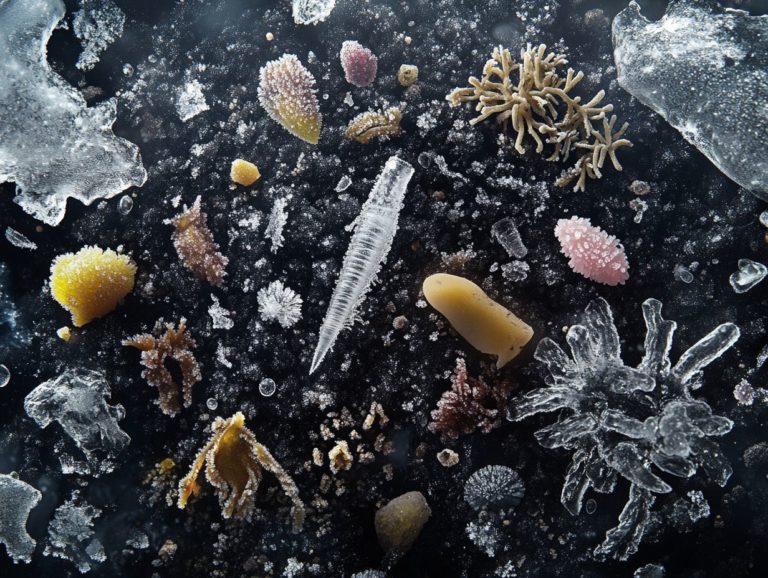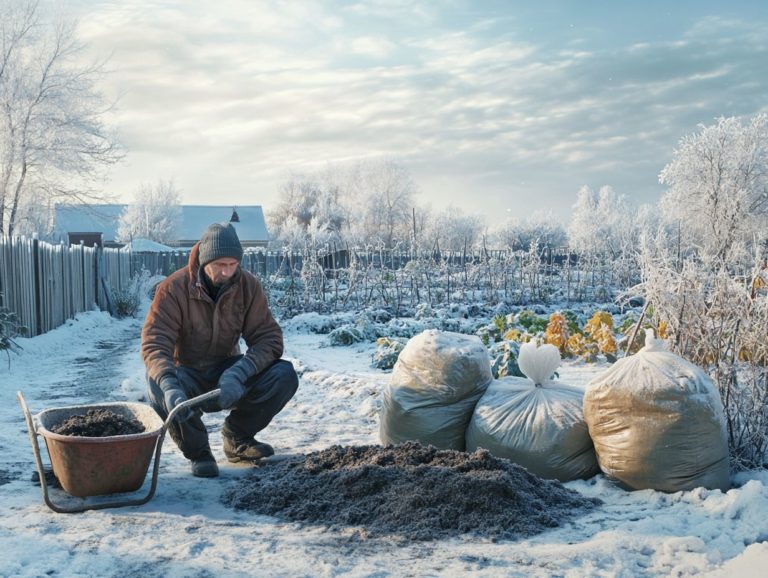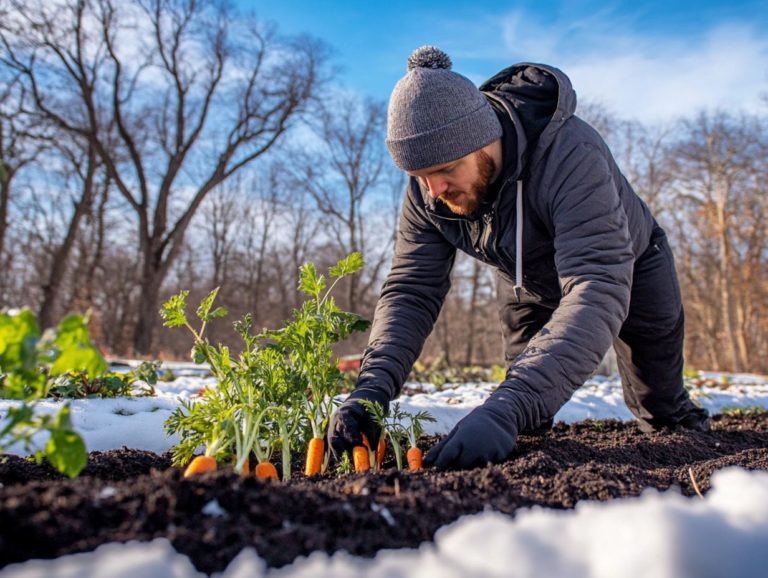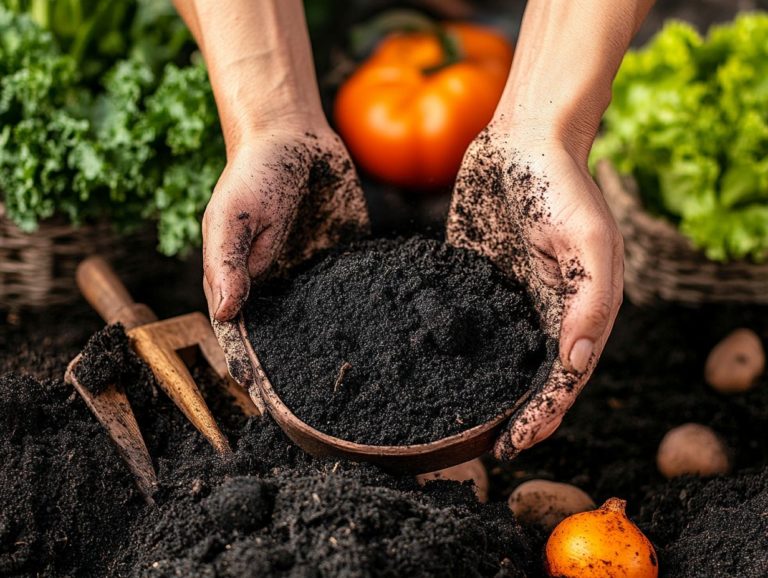5 Soil Improvement Techniques for Cold Climates
Gardening in cold climates can create distinct challenges, but with the right techniques, you can cultivate a vibrant and flourishing garden.
This article delves into five effective soil improvement strategies specifically designed for cooler regions: mulching, composting, cover cropping, raised bed gardening, and selecting cold-hardy plants.
Each of these methods not only elevates soil quality but also bolsters plant health and resilience against harsh weather conditions.
Uncover practical tips and insights that will enhance your cold-climate gardening endeavors and lead you to success.
Contents
- Key Takeaways:
- 1. Mulching
- 2. Composting
- 3. Cover Cropping
- 4. Raised Bed Gardening
- 5. Using Cold-Hardy Plants
- What Are the Challenges of Gardening in Cold Climates?
- Frequently Asked Questions
- 1. What are the benefits of using soil improvement techniques in cold climates?
- 2. What are the five most effective soil improvement techniques for cold climates?
- 3. How does mulching improve soil in cold climates?
- 4. What is the purpose of using cover crops in cold climates?
- 5. Can composting be done in cold climates?
- 6. Why is crop rotation important in cold climates?
Key Takeaways:
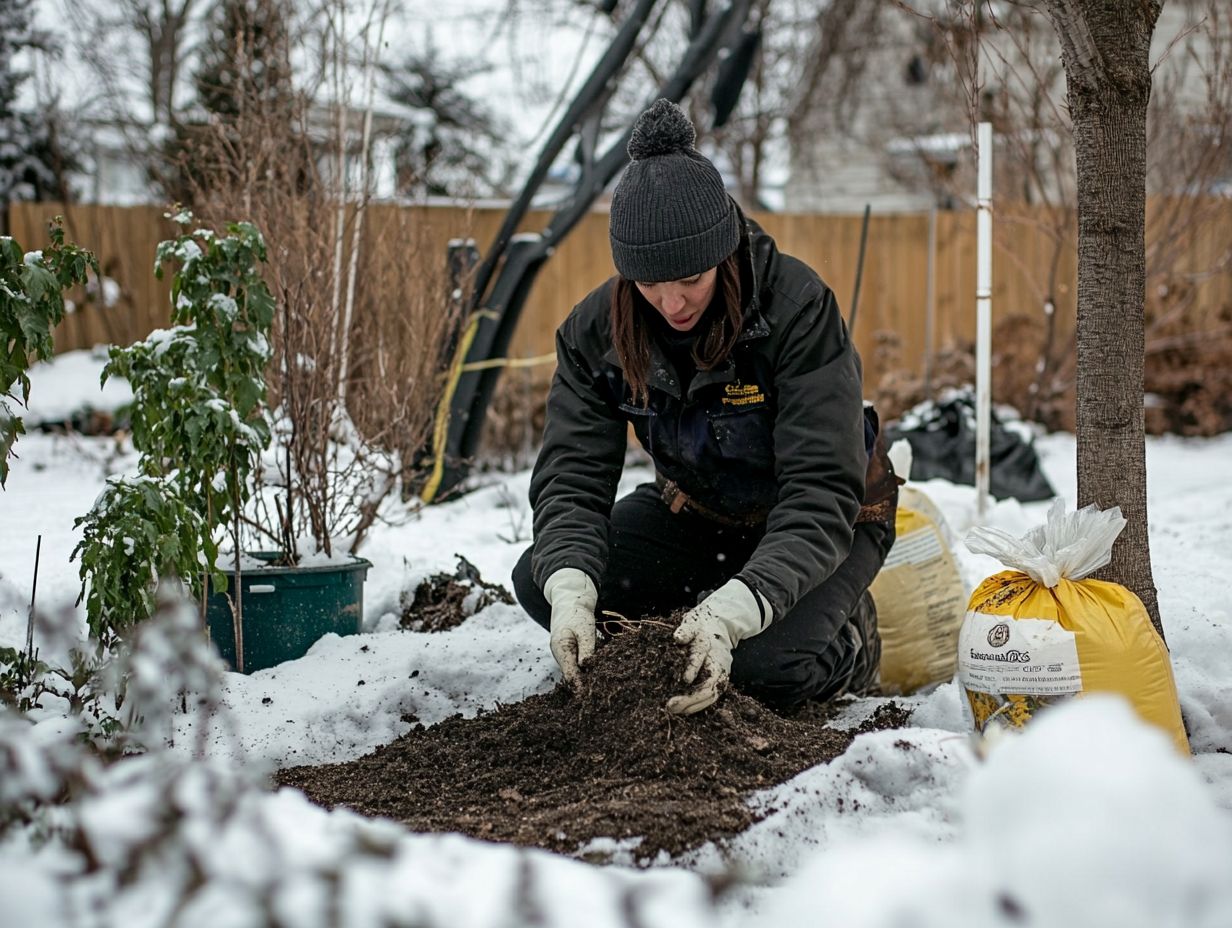
- Mulching can improve soil quality by retaining moisture and regulating temperature in cold climates.
- Composting is beneficial in cold climates as it adds nutrients and improves soil structure.
- Cover cropping can help improve soil in cold climates by preventing erosion and adding organic matter.
1. Mulching
Mulching is a vital practice for enhancing soil health, especially during the winter months. When temperatures drop, biological activity slows, making mulching essential.
It serves as a protective barrier that retains moisture, prevents erosion, and provides a slow release of the nutrients essential for plants and the overall garden ecosystem.
You can further enrich your gardening experience by choosing from different types of mulch. Whether you opt for organic materials like shredded leaves, straw, or bark chips, or synthetic options like landscape fabric, each has its unique benefits.
Organic mulches improve soil structure as they decompose. They also help suppress weed growth, minimizing competition for nutrients.
When applied effectively in a two- to four-inch layer around your plants, mulch can significantly enhance moisture retention. This creates an ideal environment for root development.
To maximize these benefits, avoid piling mulch against plant stems. This can lead to rot. Instead, keep a clear space around the base of the stems to promote healthy growth.
2. Composting
Composting is a sustainable farming practice that gives you the power to enrich your soil by transforming organic materials into nutrient-rich compost.
This process boosts biological activity, making your crops thrive in the colder months.
It all starts with gathering a variety of materials think kitchen scraps like vegetable peels and yard waste such as leaves and grass clippings, and even agricultural residues.
Maintaining the optimal balance of carbon and nitrogen, typically around 30:1, is crucial for effective decomposition. This careful balance encourages healthy microbial life, playing a vital role in breaking down those materials into rich compost.
Once you have your compost ready, you can incorporate it into your fields. This enhances soil structure and moisture retention, boosting plant health while nurturing a vibrant ecosystem.
Ultimately, this leads to more sustainable farming practices, benefiting both you and the environment.
3. Cover Cropping
Cover cropping is a proactive agricultural technique where you plant specific crops during the winter months.
This approach significantly enhances soil health by boosting nitrogen levels, reducing erosion, and increasing moisture retention all crucial factors for supporting biological activity.
This practice not only replenishes vital nutrients but also encourages biodiversity within the soil ecosystem.
You can select cover crops tailored to the specific benefits they offer. For example, legumes are excellent at fixing atmospheric nitrogen, while grains develop a dense root structure that improves soil integrity and prevents compaction.
Your selection process should be guided by the local climate and existing soil conditions. This ensures that the chosen cover crops not only thrive but also deliver maximum benefits.
By implementing these practices, you can reap long-term advantages in crop management, including increased yields, reduced reliance on chemical fertilizers, and a healthier agricultural environment.
4. Raised Bed Gardening
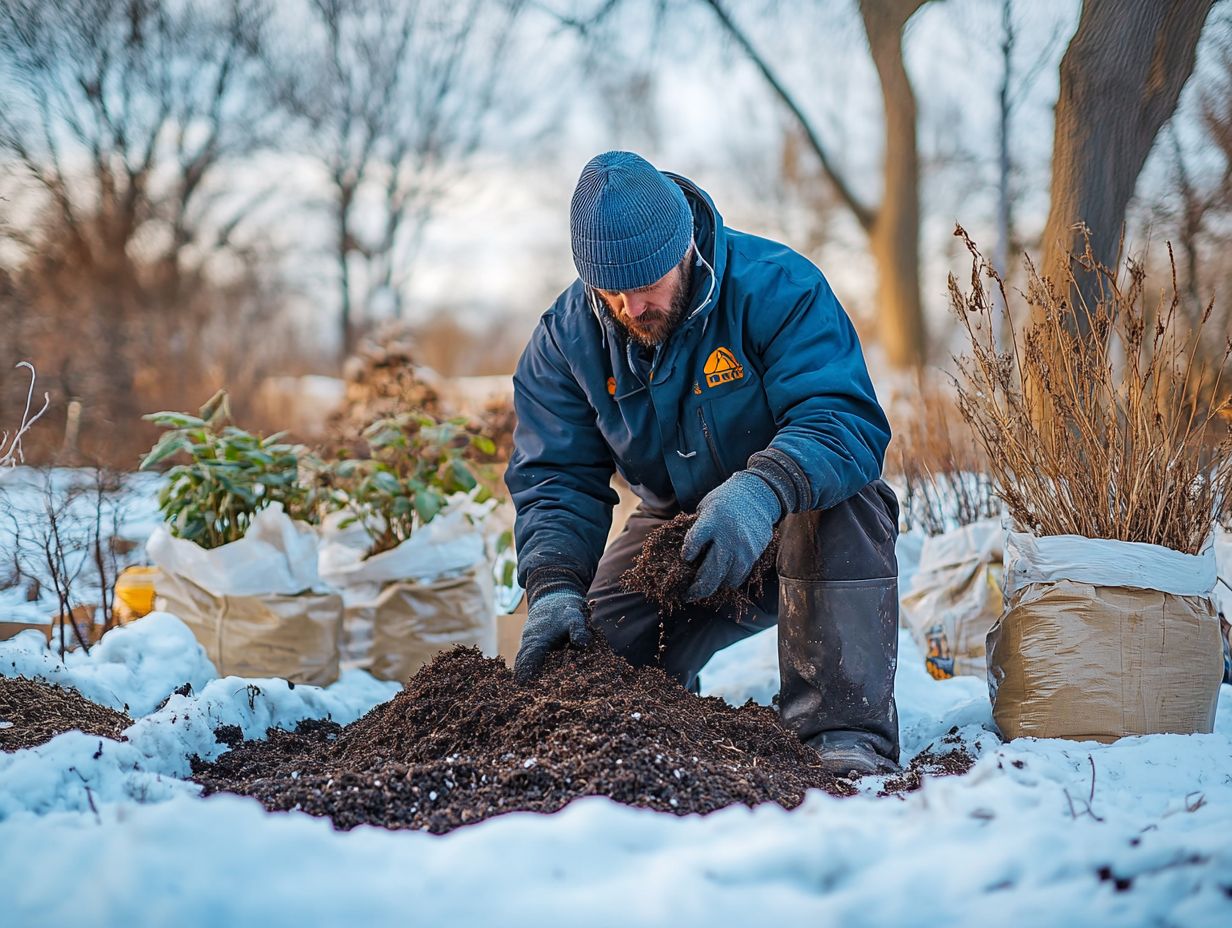
Raised bed gardening stands out as an exceptionally effective method for enhancing soil conditions. It promotes better drainage and reduces soil compaction, allowing you to manage moisture and organic matter with ease, even during those challenging winter months.
This technique streamlines planting and maintenance. It also creates an ideal environment for diverse plants to thrive.
When you set out to construct raised beds, choosing durable materials like untreated wood or composite boards is essential for ensuring longevity. Pairing these with the right soil amendments such as compost and peat moss enhances nutrients available. With this thoughtful approach, you’ll enjoy robust vegetables and stunning flowers, with crops like tomatoes, peppers, and herbs truly flourishing in this well-aerated setup.
5. Using Cold-Hardy Plants
Using cold-hardy plants in your winter gardening boosts your garden’s resilience and enhances soil health. These plants provide organic matter, improve soil structure, and support root systems during chillier months.
By incorporating crops like kale, spinach, and various types of cabbages into your winter landscape, you cultivate a vibrant ecosystem that flourishes even in the cold. These hardy varieties withstand harsh weather and enrich the soil as they decompose, promoting tiny organisms in the soil that help plants grow.
Planting cover crops such as winter rye or clover can further elevate soil fertility and prevent erosion. This strategy ensures that your garden not only survives the winter but also emerges rejuvenated and more productive when spring arrives.
What Are the Challenges of Gardening in Cold Climates?
Gardening in cold climates brings unique challenges to navigate. Fluctuating winter temperatures can play havoc with your crops, and frost damage is a constant worry.
Effective soil management is essential to maintain health and fertility through harsh seasonal shifts. These issues can complicate your growing season, but with thoughtful strategies, you can mitigate their effects.
For example, protecting your plants from frost might involve using frost covers or cold frames, which create a microclimate that helps stabilize temperatures. Managing soil moisture and structure is crucial, especially since moisture levels can drop significantly during freezing spells.
Using mulch is a smart move; it helps retain soil moisture while providing insulation for your root systems. Combatting erosion during winter is vital. By incorporating cover crops in the off-season, you can anchor the soil and enhance its fertility, paving the way for a resilient gardening approach.
How Can Mulching Improve Soil Quality in Cold Climates?
Mulching significantly enhances soil quality in cold climates by serving as an insulating layer that conserves moisture, prevents nutrient loss, and shields soil structure from harsh winter elements. Additionally, exploring techniques for soil aeration in cold climates can further improve your garden’s health.
This barrier keeps your roots cozy, ensuring they thrive come spring. It also creates an inhospitable environment for weeds, suppressing their growth by blocking sunlight and reducing competition for nutrients.
For optimal results in winter gardening, consider using organic materials like shredded leaves, straw, or wood chips. These materials decompose over time, enriching the soil in the process. Aim for a layer of 2-4 inches, ensuring it covers the soil evenly while leaving space around plant stems to prevent rot.
Experiment with different materials to boost effectiveness and create a thriving ecosystem that supports beneficial microorganisms.
What Are the Benefits of Composting in Cold Climates?
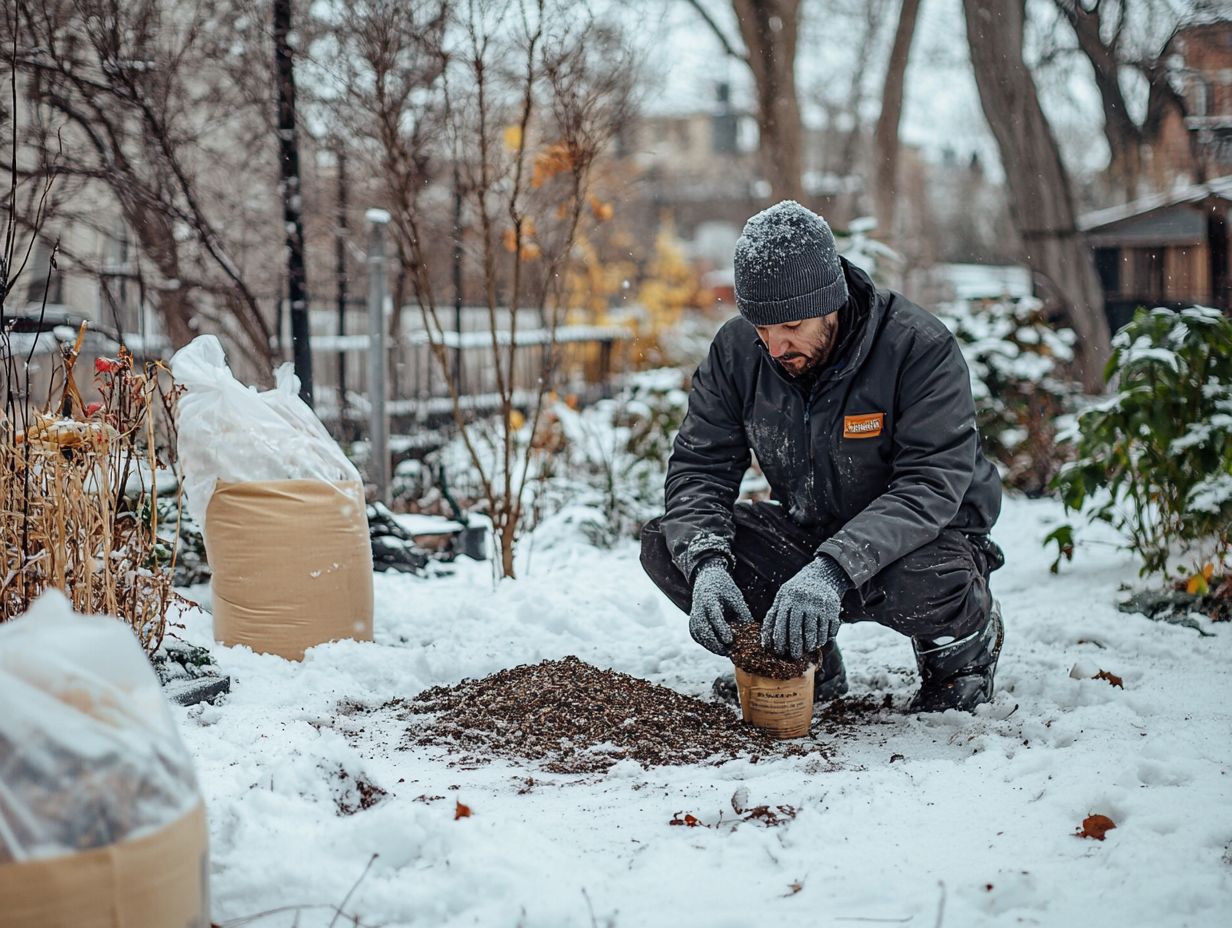
Composting in cold climates offers great advantages, as it enriches your soil with nutrients. For those interested, following cold-climate gardening soil preparation tips can be particularly beneficial, even during the quiet winter months.
To improve your composting, use insulated bins or piles. They help keep heat, boosting microbial activity the work of tiny organisms that break down waste even in winter.
Add materials like straw or wood chips to create air pockets that help decomposition. Keep an eye on moisture levels since dry conditions can slow down your compost. Covering your pile with a tarp shields it from freezing winds.
Composting not only enhances soil structure but also boosts moisture retention, keeping your gardens thriving even after frost!
How Can Cover Cropping Help Improve Soil in Cold Climates?
Cover cropping is an effective strategy to enhance soil health in cold climates. It prevents erosion, boosts nitrogen levels, and maintains soil structure during winter when crops lie dormant. For detailed guidance, check out how to build a soil profile for cold climates.
This practice opens the door to many ecological benefits beyond your fields. Introducing crops like winter rye and hairy vetch creates a protective barrier that stabilizes the soil and enriches microbial diversity. This biodiversity is crucial for breaking down organic matter, increasing nutrient availability come spring.
These methods empower you to cultivate a sustainable farming ecosystem. You naturally enrich the soil while reducing reliance on synthetic fertilizers. This approach promotes healthier plants and contributes to long-term agricultural resilience, ensuring fruitful farming for years!
What Are the Advantages of Raised Bed Gardening in Cold Climates?
Raised bed gardening has numerous advantages in cold climates, such as improved drainage, better control over soil moisture, and enhanced warmth for the soil.
By elevating your growing area, raised beds create a microclimate that protects plants against harsh cold, allowing them to thrive year-round. This setup prevents soil compaction and encourages beneficial microbial activity, essential for soil health.
To maximize benefits in winter, insulate your beds using:
- Mulch
- Row covers
- Cold frames
These techniques trap heat and shield plants from frost. Rotate your crops to boost fertility and yield!
Regular maintenance is key. Monitor moisture levels and adjust watering to meet winter’s unique challenges.
What Are the Best Cold-Hardy Plants for Soil Improvement?
The best cold-hardy plants for soil improvement include species celebrated for their resilience in winter conditions. They contribute organic matter, enhance soil structure, and support beneficial microbial life, making them ideal for soil amendments effective for cold climates.
Options like winter rye, clover, and vetch are noteworthy. Their deep root systems break up compacted soil, benefiting your gardening efforts. Weaving these plants into your winter strategies cultivates a garden that is both visually appealing and highly functional.
As they flourish, they enrich the soil with nitrogen and organic matter, boosting fertility for spring. Plus, their vibrant green foliage adds aesthetic charm in cold months, letting you enjoy a lush winter garden while nurturing the earth!
Frequently Asked Questions
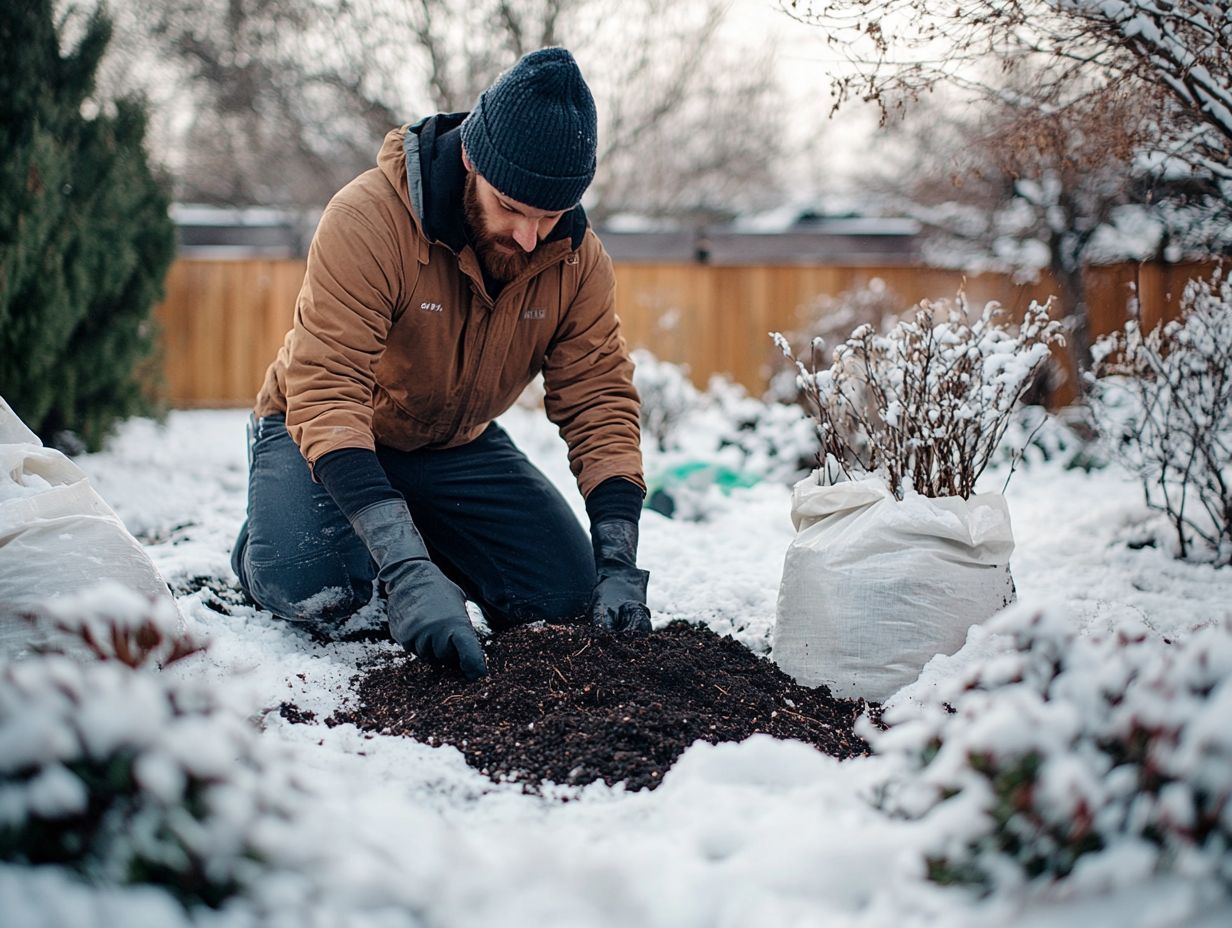
1. What are the benefits of using soil improvement techniques in cold climates?
Soil improvement techniques in cold climates increase soil fertility and promote plant growth. For effective methods, check out these 5 ways to improve soil health. They also prevent erosion, improve drainage, and enhance soil structure, making nutrients and water more accessible for plants.
2. What are the five most effective soil improvement techniques for cold climates?
Discover the five powerful soil techniques that can transform your cold climate gardening experience! Among them, overcoming soil compaction in cold climates is crucial. The most effective methods are mulching, cover cropping, composting, raised beds, and crop rotation. These methods create a healthy and productive soil environment.
3. How does mulching improve soil in cold climates?
Mulching insulates the soil from extreme temperature changes. It prevents freezing and thawing, which can damage plant roots, while also adding organic matter that improves soil structure and nutrients.
4. What is the purpose of using cover crops in cold climates?
Cover crops protect soil from erosion and enhance its overall health. They add nutrients, suppress weeds, and provide habitats for beneficial organisms.
5. Can composting be done in cold climates?
Yes, composting is possible in cold climates. Use a balanced mix of green and brown materials and regularly turn the compost pile to maintain the necessary temperature for decomposition.
6. Why is crop rotation important in cold climates?
Crop rotation is crucial in cold climates to prevent nutrient depletion. Rotating crops allows various plants to grow, replenishing the soil and maintaining its health.

